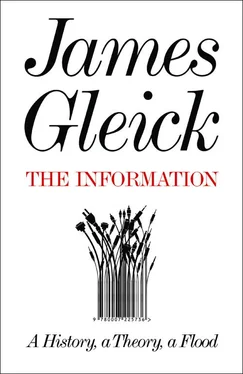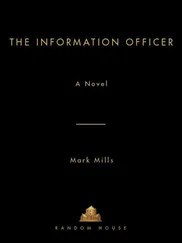As he looked to the future, he saw a special role for one truth above all: “the maxim, that knowledge is power.” He understood that literally. Knowledge “is itself the generator of physical force,” he declared. Science gave the world steam, and soon, he suspected, would turn to the less tangible power of electricity: “Already it has nearly chained the ethereal fluid.” And he looked further:
It is the science of calculation —which becomes continually more necessary at each step of our progress, and which must ultimately govern the whole of the applications of science to the arts of life.
Some years before his death, he told a friend that he would gladly give up whatever time he had left, if only he could be allowed to live for three days, five centuries in the future.
As for his young friend Ada, countess of Lovelace, she died many years before him—a protracted, torturous death from cancer of the womb, her agony barely lessened by laudanum and cannabis. For a long time her family kept from her the truth of her illness. In the end she knew she was dying. “They say that ‘ coming events cast their shadows before ,’ ” she wrote to her mother. “May they not sometimes cast their lights before?” They buried her next to her father.
She, too, had a last dream of the future: “my being in time an Autocrat , in my own way.” She would have regiments, marshaled before her. The iron rulers of the earth would have to give way. And of what would her regiments consist? “I do not at present divulge. I have however the hope that they will be most harmoniously disciplined troops;—consisting of vast numbers , & marching in irresistible power to the sound of Music . Is not this very mysterious? Certainly my troops must consist of numbers , or they can have no existence at all. . . . But then, what are these Numbers ? There is a riddle—”
1 Leibniz dreamed grandly of mechanizing algebra and even reason itself. “We may give final praise to the machine,” he wrote. “It will be desirable to all who are engaged in computations . . . the managers of financial affairs, the administrators of others’ estates, merchants, surveyors, geographers, navigators, astronomers. . . . For it is unworthy of excellent men to lose hours like slaves in the labor of calculation.”
2 Another guest, Charles Dickens, put something of Babbage into the character of Daniel Doyce in Little Dorrit . Doyce is an inventor mistreated by the government he tries to serve: “He is well known as a very ingenious man. . . . He perfects an invention (involving a very curious secret process) of great importance to his country and his fellow-creatures. I won’t say how much money it cost him, or how many years of his life he had been about it, but he brought it to perfection.” Dickens added: “A composed and unobtrusive self-sustainment was noticeable in Daniel Doyce—a calm knowledge that what was true must remain true.”
Chapter Five
A Nervous System for the Earth
(What Can One Expect of a Few Wretched Wires?)
Is it a fact—or have I dreamt it—that, by means of electricity, the world of matter has become a great nerve, vibrating thousands of miles in a breathless point of time? Rather, the round globe is a vast head, a brain, instinct with intelligence! Or, shall we say, it is itself a thought, nothing but thought, and no longer the substance which we deemed it!
—Nathaniel Hawthorne (1851)
THREE CLERKS IN A SMALL ROOM UPSTAIRS in the Ferry House of Jersey City handled the entire telegraph traffic of the city of New York in 1846 and did not have to work very hard. They administered one end of a single pair of wires leading to Baltimore and Washington. Incoming messages were written down by hand, relayed by ferry across the Hudson River to the Liberty Street pier, and delivered to the first office of the Magnetic Telegraph Company at 16 Wall Street.
In London, where the river caused less difficulty, capitalists formed the Electric Telegraph Company and began to lay their first copper wires, twisted into cables, covered with gutta-percha, and drawn through iron pipes, mainly alongside new railroad tracks. To house the central office the company rented Founders’ Hall, Lothbury, opposite the Bank of England, and advertised its presence by installing an electric clock— modern and apt, for already railroad time was telegraphic time. By 1849 the telegraph office boasted eight instruments, operated day and night. Four hundred battery cells provided the power. “We see before us a stuccoed wall, ornamented with an electric illuminated clock,” reported Andrew Wynter, a journalist, in 1854. “Who would think that behind this narrow forehead lay the great brain—if we may so term it—of the nervous system of Britain?” He was neither the first nor the last to liken the electric telegraph to biological wiring: comparing cables to nerves; the nation, or the whole earth, to the human body.
The analogy linked one perplexing phenomenon with another. Electricity was an enigma wrapped in mystery verging on magic, and no one understood nerves, either. Nerves were at least known to conduct a form of electricity and thus, perhaps, to serve as conduits for the brain’s control of the body. Anatomists examining nerve fibers wondered whether they might be insulated with the body’s own version of gutta-percha. Maybe nerves were not just like wires; maybe they were wires, carrying messages from the nether regions to the sensorium. Alfred Smee, in his 1849 Elements of Electro-Biology , likened the brain to a battery and the nerves to “bio-telegraphs.” Like any overused metaphor, this one soon grew ripe for satire. A newspaper reporter in Menlo Park, discovering Thomas A. Edison in the grip of a head cold, wrote: “The doctor came and looked at him, explained the relations of the trigeminal nerves and their analogy to an electric telegraph with three wires, and observed incidentally that in facial neuralgia each tooth might be regarded as a telegraph station with an operator.” When the telephone arrived, it reinforced the analogy. “The time is close at hand,” declared Scientific American in 1880, “when the scattered members of civilized communities will be as closely united, so far as instant telephonic communication is concerned, as the various members of the body now are by the nervous system.” Considering how speculative the analogy was, it turned out well. Nerves really do transmit messages, and the telegraph and telephone did begin to turn human society, for the first time, into something like a coherent organism.
In their earliest days these inventions inspired exhilaration without precedent in the annals of technology. The excitement passed from place to place in daily newspapers and monthly magazines and, more to the point, along the wires themselves. A new sense of futurity arose: a sense that the world was in a state of change, that life for one’s children and grandchildren would be very different, all because of this force and its uses. “Electricity is the poetry of science,” an American historian declared in 1852.
Not that anyone knew what electricity was. “An invisible, intangible, imponderable agent,” said one authority. Everyone agreed that it involved a “peculiar condition” either of molecules or of the ether (itself a nebulous, and ultimately doomed, conception). Thomas Browne, in the seventeenth century, described electrical effluvia as “threads of syrup, which elongate and contract.” In the eighteenth, the kite-flying Benjamin Franklin proved “the sameness of lightning with electricity”— identifying those fearsome bolts from the sky with the odd terrestrial sparks and currents. Franklin followed the Abbé Jean-Antoine Nollet, a natural philosopher and a bit of a showman, who said in 1748, “Electricity in our hands is the same as thunder in the hands of nature” and to prove it organized an experiment employing a Leyden jar and iron wire to send a shock through two hundred Carthusian monks arranged in a circle one mile around. From the monks’ almost simultaneous hops, starts, jerks, and cries, onlookers judged that the message—its information content small but not zero—sped round the circle at fantastic speed.
Читать дальше











